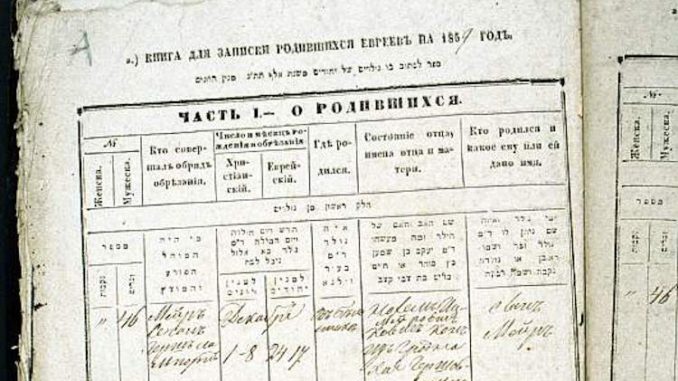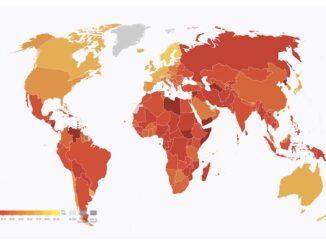
A spate of high profile fraud cases in New Zealand in recent months have highlighted major gaps in the document vetting processes of organisations in the health, financial and other sectors. Document fraud costs the economy millions, and results in the gaining of entitlements – such as jobs, mortgages, visa applications and identity documents – by people who would otherwise not qualify for them.
There was the recent case of a psychiatrist who turned out to be a fraud, which resulted in the Waikato District Health Board’s mental health services being formally inspected under Mental Health Act provisions. The alleged fraudster worked as a psychiatrist in the DHB for six months this year, allegedly under another doctor’s identity.
Then, in early September, the jury in a long-running Serious Fraud Office (SFO) case found a woman guilty of 10 charges under Section 228 of the Crimes Act. Vicki Ravana Letele and an associate, Ramni Kumar, had used fake documents to get mortgage finance for low-income families who wouldn’t otherwise have been able to get finance. Letele has been remanded on bail and will be sentenced on 3 November.
With massive investments being made in information security and fraud detection and prevention in cyberspace, has vigilance against old-fashioned document fraud gone by the wayside? Indeed, is it a mistake to consider old- fashioned document fraud as, well, old- fashioned? To these and other questions, New Zealand Security Magazine sought answers from senior forensic document examiner Tonya Trubshoe.
New Zealand born and raised, Tonya has held positions within the Australian Immigration Department and the Queensland Police Service. She is now with Perth-based Document Examination Solutions and is also a lead subject matter expert at the Canberra Institute of Technology. Posted overseas as an Australian diplomat, she has worked extensively throughout South East Asia, with a strong focus on the Philippines, Thailand, Vietnam, Cambodia and Laos.
NZSM: Are there gaps in levels of document examination skills/ qualifications among officials responsible for checking documents in government and the education and health systems?
Tonya: Yes, and there are a number of elements that combine to create those gaps. The approach for organisations responsible for the examination of documents should be considered as being at three levels: detection, confirmation, forensic. If a ‘one shoe fits all’ approach is taken and there is no definition of a tiered responsibility, it can create uncertainty and inefficiencies.
Enjoying this article? Consider a subscription to the print edition of New Zealand Security Magazine.
At each level, specific training and development is required and this is regularly not addressed. In addition, whether training is or is not provided, evaluations of assessors’ actual capabilities are rarely made, and where circumstances identify that an assessor is lacking certain competencies, there is little or no consequence.
These are management issues around building, maintaining and compassionately challenging the skills of those examining documents, at the various levels that exist.
NZSM: How has the use of electronic document transmission (e.g. emailing files) impacted on the document fraud landscape?
Tonya: The manipulation of information on documents by electronic means is both common and extensive; people with just moderate computer skills can alter information on documents.
Electronic document submissions create efficiencies, but this is to some degree at the expense of integrity. Where electronic submission of identity and other documents is the accepted business practice, it creates significant challenge for organisations to ensure they have strategies in place to mitigate the inherent risks that present.
The move away from original documents to electronic submissions creates the need for a completely new approach to document assessments, procedures, and management of the assessment process. Different skills are required by assessors, however it should not be lost that even when dealing with documents submitted electronically, an understanding of original document production and security features remains critical.
The expectation of the applicant and the standard of the submitted documents must be well defined. This can include the minimum standards of resolution, file sizes, whether the documents are certified. If this is not an element of the process, then there is a greater opportunity for fraudulent documents to remain undetected, or undetectable.
NZSM: How easy is it to manufacture or otherwise get one’s hands on a fraudulent document, such as a drivers licence, passport, educational qualifications, references, etc?
Tonya: It is not surprising that with advancements in printing technology, in particular digital printing technology, there is the opportunity to pictorially reproduce almost any document with relative ease, and on face value, some of these documents will appear authentic.
Organised crime syndicates have access to sophisticated resources to produce what is often referred to as ‘high quality’ counterfeit and fraudulent documents, and whilst these documents may appear high quality, a competent assessment of the security features will reveal that they are not. The quality of the fraudulent or counterfeit document determines the ease by which it can be acquired, and is most often directly proportionate to the price paid.
In addition to manufacturing their own fraudulent documents, or purchasing them through other means, the method of using genuine documents fraudulently is also commonly employed. The most common methods for acquiring fraudulently obtained documents include taking on the identity of a genuine document holder as an imposter, or acquiring new genuine documents through the use of fraudulent or counterfeit breeder documents. Biometric systems are currently being researched and introduced that will reduce the ability for documents to be obtained in this way.
NZSM: What types of documents are the most targeted by fraudsters?
Tonya: Circumstances usually dictate the documents that are targeted. High value secure documents such as passports, identity cards, birth certificates and drivers licences are regularly targeted as a means of creating or assuming an identity for fraudulent purposes.
Importantly, these documents are being presented across a broad spectrum of industries and do not always need to be of the highest standard to avoid detection. Equally, documents such as educational qualifications, references or those that define particular skills or knowledge can be created or altered for other more personal means. In the end, any document can be potentially fraudulent if it is being used to contribute to an application, process or claim.
NZSM: Are applications for things like bank loans, bank accounts, driver licences, university enrolment and employment routinely subject to forensic document examination by issuing/ approving organisations? Do they have protocols in place that may result in a document being referred for examination?
Tonya: There is more visible acknowledgement of the risks associated with the acceptance of fraudulent documents, and whilst some organisations have sound referral processes in place, many do not. There are numerous recent examples of agencies acknowledging deficiencies not only in their skill level to conduct an initial assessment, but also in their mechanisms to respond when issues are identified.
Forensic Document Examination is a field of expertise not often employed in-house by organisations outside of police services and immigration and border agencies. Where organisations do not have their own qualified examiners, private document examination consultants are engaged. Depending on the nature of the organisation, the protocols they have in place, and the risk analysis undertaken on accepting/ missing fraud in their processes, referral for forensic document examination may or may not occur.
NZSM: Where are the major gaps in our understanding of document fraud?
Tonya: There is a lack of awareness of just how much fraud a front-line or referral officer can detect, if properly trained and supported. Often the belief is that the fraud is “high quality” and therefore organisations do not have confidence that they will be able to detect the documents of concern.
The reverse can also be said for electronic documents where it is believed that very little can be assessed because the documents are “low quality”. Both scenarios can result in less emphasis being placed on the assessment of documents within the organisation’s processes.
Understanding the foundations of document assessment and fraud is also a gap that should be reviewed and included in training for document assessors. Knowing the core issues of document fraud is essential for understanding where document assessments fit in the bigger picture, however it is usually the first component to be removed in a training course when time is at a premium.
More holistically, as technology advances, automated means of validation or verification of a person’s identity will become achievable through biometric identifiers and interagency verification means, however this substantially remains a work in progress. In the current world, these technologies do not replace physical documents, which is why there remains such a strong international investment in emerging document security measures.
Documents will remain a foundation pillar in establishing the identity or other information about a person for many years to come, so it is critical that organisations are both skilled and resourced to respond to the question of whether documents presented are real or not.
NZSM: Where are the major gaps in training and detection?
Tonya: Training must be considered an investment, not only introductory training but also the maintenance and advancement of the acquired skills. Probably the most major of gaps comes where organisations have no training or it is kept to a minimum. Addressing maintenance and advancement of skills is rare.
Time needs to be invested in developing the skills of document assessors, and appropriate material covered ie. providing foundation understanding of document fraud, manufacture and examination of original documents, and examination techniques for non-original documents etc.









